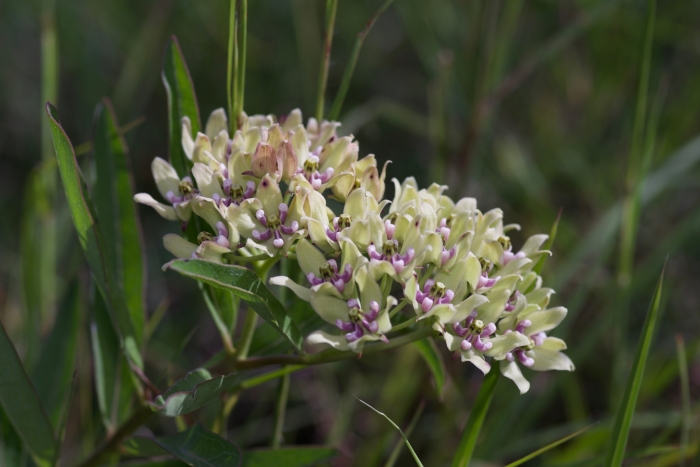Green Milkweed
(Asclepias viridis)
Green Milkweed (Asclepias viridis)
/
/

Michelle W.
CC BY 4.0


















































Estimated Native Range
Summary
Green Milkweed is valued for its role in supporting pollinator populations, particularly Monarch butterflies. It is often used in native plant gardens, prairie restorations, and wildlife habitats. While it can be challenging to establish due to its taproot, once settled, it requires minimal maintenance. It thrives in full sun and is adaptable to various soil types, provided they have medium drainage. It is important to note that the seeds require cold stratification to germinate. This species is not well-suited for container growing due to its deep root system. Potential issues include susceptibility to root rot in poorly drained soils and vulnerability to aphids and milkweed bugs.CC BY-SA 4.0
Plant Description
- Plant Type: Herb
- Height: 1.5-2.5 feet
- Width: 1-2 feet
- Growth Rate: Moderate
- Flower Color: Green, Purple
- Flowering Season: Spring, Summer
- Leaf Retention: Deciduous
Growth Requirements
- Sun: Full Sun
- Water: Medium
- Drainage: Medium
Common Uses
Bee Garden, Bird Garden, Butterfly Garden, Deer Resistant, Drought Tolerant, Edible*Disclaimer: Easyscape's listed plant edibility is for informational use. Always verify the safety and proper identification of any plant before consumption., Fragrant, Hummingbird Garden, Low Maintenance, Street Planting
Natural Habitat
Native to grasslands, prairies, and open fields in the Central and Southeastern United States
Other Names
Common Names: Spider Milkweed, Green Antelopehorn
Scientific Names: , Asclepias viridis, Asclepiodora viridis, Acerates paniculata, Anantherix connivens, Anantherix paniculata, Anantherix torreyana, Anantherix verrucosa, Anantherix viridis, Anthanotis procumbens
GBIF Accepted Name: Asclepias viridis Walter